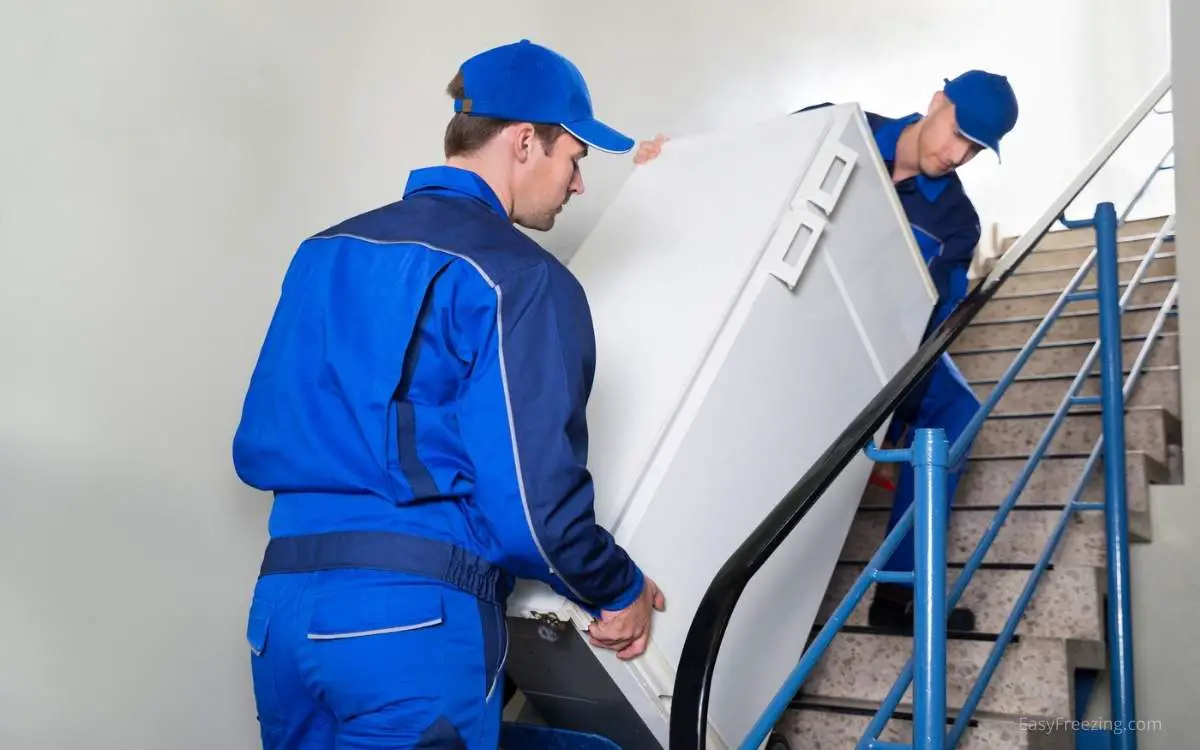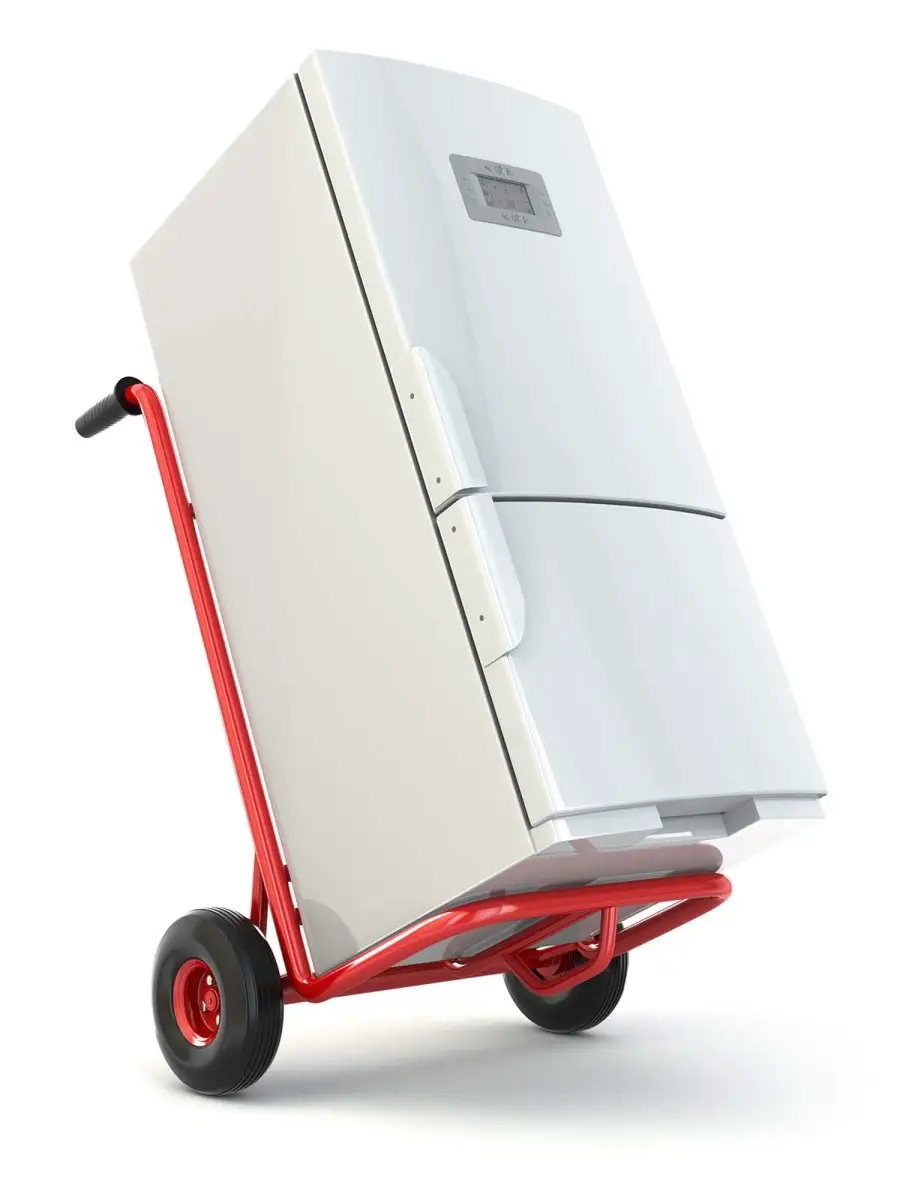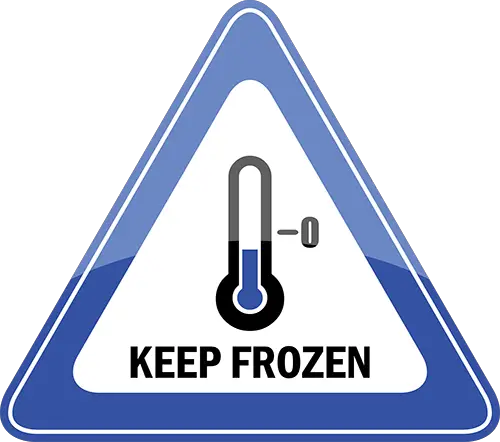Laying a Freezer on Its Side For Transport (Yes or No?)
Freezers can be rather bulky, which means that it is often very difficult to transport them while standing upright. Because of this, a lot of people wonder whether you can lay a freezer on its side. Let’s explain.
So, can you lay a freezer on its side? Preferably, no. You can do it. However, if you have the opportunity to stand it upright, then that should always be the preferred option. If you transport a freezer on its side, then it is likely going to be out of commission for at least 24 hours.
On this page, I want to go into a bit more depth on why a freezer shouldn’t really be on its side during transport and, perhaps more importantly, what you can do if you have no choice other than to lay that freezer down.

Can You Lay a Freezer On Its Side For Transport?
No. Well, you can. However, it is generally not advised.
To understand why you can’t lay a freezer on its side for transport, you need to know how a freezer works.
Inside your freezer, there is a series of coils and various other components. In order to cool down your freezer, these coils and components will pump a liquid known as refrigerant through the system. As the refrigerant is pumped through the system, it changes state from liquid to gas, and then back to liquid.
During this process, the refrigerant will attract the heat inside the freezer, cooling it down. It works in exactly the same way as fridge and air conditioning systems, and it works incredibly well.
The problem is that the system only works well when the freezer is standing upright. When upright the refrigerant will be properly spread throughout the system. However, when you lay the freezer down on its side, the refrigerant will start to pool in areas where you really don’t want it to pool.
This means that when you turn the freezer back on, the cooling system isn’t going to work properly. In fact, you run the risk of burning out the various components in your freezer.
In fact, even if you stand the freezer upright during transport, there is the risk that it is going to shake about quite a bit. This will cause the refrigerant to slosh around inside, and that can cause issues when you switch it back on.
Now, this isn’t to say that you cannot transport a freezer on its side. It is more that you are going to need to take a few precautions before you do so. In fact, you are going to need to take a few precautions after you have finished transporting the freezer too.
What Should You Do If Your Freezer Needs To Be Transported On Its Side?
First things first, you are going to need to ensure that you place the freezer on the correct side, particularly if you have a cabinet freezer.
You will want to position the freezer so that the freezer’s compressor is on the bottom. This will prevent the liquid inside from bouncing around too much. While you can position the freezer in other ways, I wouldn’t really recommend it.

You will want to ensure that the freezer is completely secured. You can use straps to do this. Although, do bear in mind that no matter how well you secure the freezer, it is likely to still bounce around a little bit. This is why, even when the freezer is standing upright, you should not be turning the freezer on right away when you get it to where it’s going.
Once you arrive at your destination, make sure that you stand the freezer back upright as soon as possible. However, you should not turn it on right away. Instead, you will want the freezer to be standing upright for at least the same amount of time that you transported it for.
So, if you were driving with the freezer on its side for 1-hour, then it needs to stand upright for at least an hour before you plug it in. However, in my opinion, you should wait for roughly 24 hours. It just makes things a little bit safer.
Honestly, even if you are transporting your freezer upright, I’d still suggest that you stand the freezer up for around 24 hours before you switch it on if you can afford to do so (i.e. you have no pressing need to freeze food quickly).
It is going to put a lot less strain on the freezer components. I have seen far too many people lose their freezers because they have switched them on too early after transportation, so I never really recommend that people take the risk.
How Do You Prepare a Freezer For Transport?
As mentioned, if you are transporting a freezer, then you are going to need to invest in some good straps that can keep it secured in place. Freezers can be quite heavy, and you do not want them bouncing around in the back of a truck or trailer. Not only is there a risk of damaging the freezer, but you also run the risk of damaging everything else around it.
This isn’t the only sort of preparation that you will need to do, however.
Before you transport the freezer, you will need to ensure that it is completely defrosted. You do not want there to be any frost inside the freezer at all. In an ideal world, you will leave the freezer switched off for a good 24-48 hours before you transport it.

The reason why you are getting rid of all that frost is that, while unplugged, the freezer is going to be defrosting. You do not want the water from the melting ice to leak around the freezer while it is being transported.
Having a lot of defrosted liquid flowing around inside a freezer being transported is also not going to be great for the components. That liquid could end up getting in places that you really, really do not want it to end up in.
Other than this, the only thing that you need to remember is that nothing should be stored in the freezer while it is being transported. It will be fine to keep the freezer drawers inside, but no food or anything like that. The less pressure that you put on the freezer during transportation, the better it is going to be for the freezer when it gets to its new home.
Laying a Freezer on Its Side – Final Word
In an ideal world, you would not lay a freezer on its side while you are transporting it. Whenever possible, freezers should be transported standing upright. This will ensure that the freezer’s refrigerant stays where it should be.
If you have no choice but to transport a freezer on its side, then you need to ensure that you do not turn it on as soon as you arrive at your final destination.
A freezer transported on its side should be stood upright for at least 24 hours before you switch it back on again. While some people suggest that you don’t need to leave it standing for that long, I don’t really feel that it is worth the risk. After all, a freezer is going to be pretty costly to replace and a little bit of patience will help ensure that your freezer isn’t put in jeopardy.






